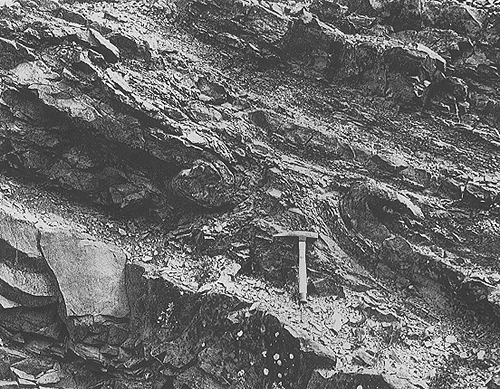
Details of a paleoslide: snapped bed
Plate 136

Details of a paleoslide: snapped bed
Plate 136
A sandstone bed, belonging to a relatively undeformed set, failed under stress. The two facing ends, at break point, were rolled up, with a clockwise rotation, which can be explained as an effect of shear, or drag: the upper beds moved to the right, the lower ones remained in place or moved less. Tension accumulated in the beds, until one or more of them (we have a limited view here) broke and released it. Such snaps in subsurface sediments and rocks send signals to the surface through seismic waves, and this is one of the cases where the term seismite seems more appropriate.
As an alternative explanation, one can imagine that the hooked bed was broken by an intrusion of mud from below (where the hammer is placed), a process known as diapirism and related to overloading and density effects. If this were the case, the hooks should be symmetrical about a vertical plane, as they would have rotated in opposite ways.
For stratigraphic unit and location, see plate 132.